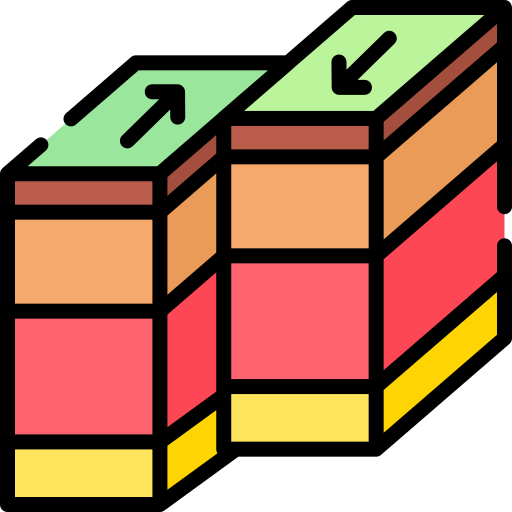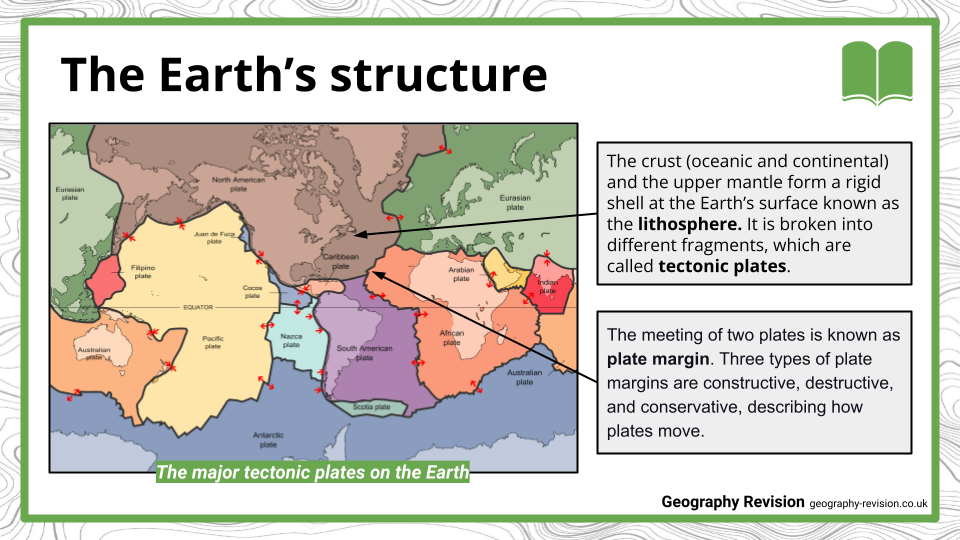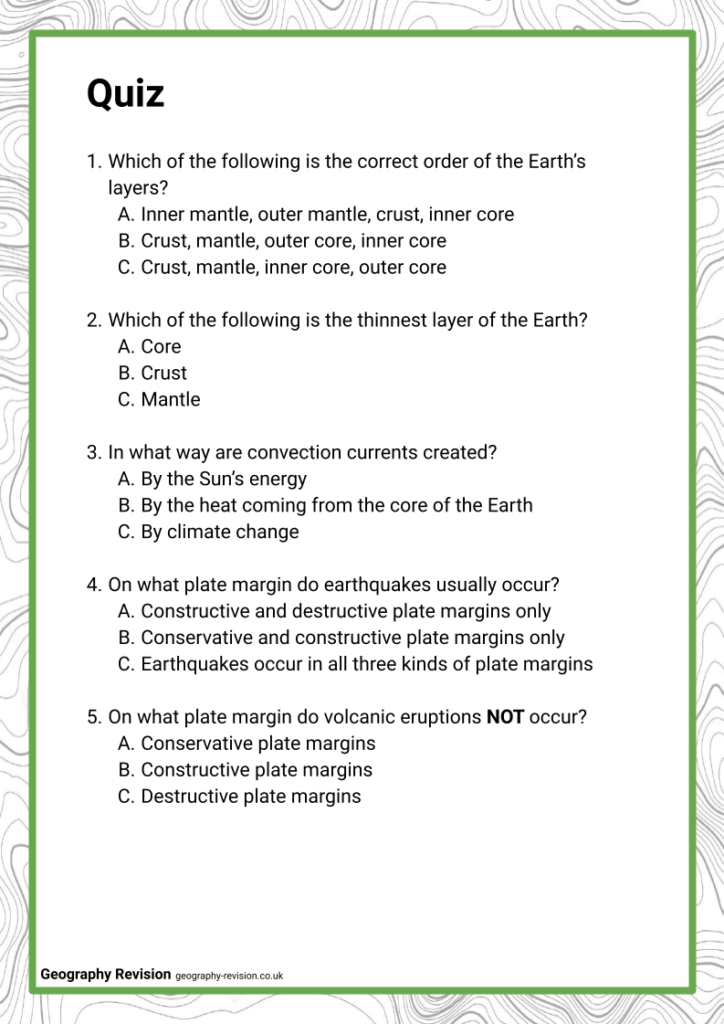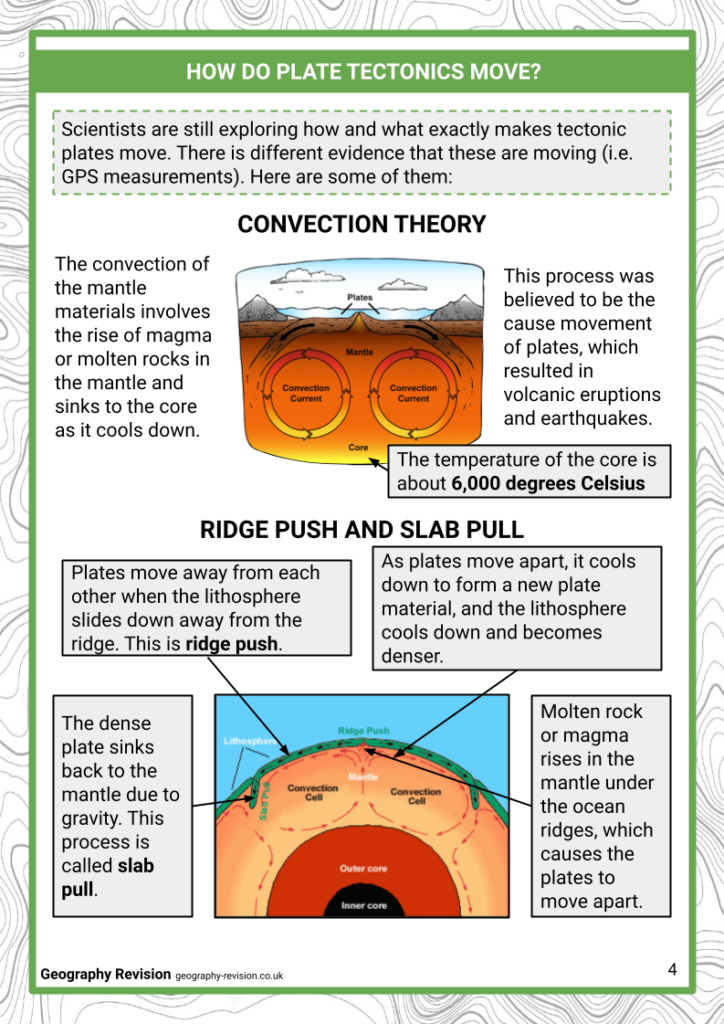Download the Plate Tectonics Module
This module contains:
- An editable PowerPoint lesson presentation
- Editable revision handouts
- A glossary that covers the key terminologies of the module
- Topic mindmaps for visualising the key concepts
- Printable flashcards to help students engage active recall
- A quiz with an answer key to test knowledge and understanding of the module

Plate Tectonics
There are four different layers of the Earth. These include the crust, the mantle, the outer core and the inner core. Tectonic plates are large, solid masses that make up the oceanic and continental crusts. The crust and the upper mantle form a rigid shell at the Earth’s surface known as the lithosphere. It is broken into different fragments called tectonic plates, and the meeting of two plates is known as a plate margin.
This A-Level Plate Tectonics module will enable students to:
- Describe the Earth’s structure and how certain physical processes result in earthquakes and volcanic eruptions;
- Discuss why and how tectonic plates move;
- Examine the global distribution of earthquakes and volcanoes in relation to plate margins;
- Describe the relationship between earthquakes, volcanoes, and plate margins;
- Discuss primary and secondary effects of tectonic hazards, as well as immediate and long-term responses to these; and
- Examine how monitoring, prediction, protection, building design, and planning reduce risks from a tectonic hazard
More Natural World Modules
Plate Tectonics is one lesson in our Natural World module. The other theory lessons can be found below:
Biodiversity
Weather Systems
Ecosystems




